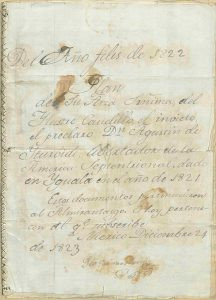The story of Mexico’s initial foray into imperial rule is intertwined with the nation’s hard-won independence from Spain. The figure at the heart of this brief but significant period is Agustín de Iturbide, who held the title of Emperor of Mexico from 1822 to 1823. His reign emerged from the decade of conflict and instability that marked the Mexican War of Independence, a struggle to break free from Spanish colonial dominion. Iturbide, initially a proponent of independence, also championed monarchy as the ideal system for the newly liberated nation, advocating for close ties with the Catholic Church.

The Rise and Fall of Iturbide I
Agustín de Iturbide’s ascent to emperor was initially fueled by popular support. He successfully unified diverse factions who desired independence, forging a coalition that ultimately led to Mexico’s liberation. However, his reign was short-lived. Accusations of corruption and growing opposition to monarchical rule from within the government and among the general populace eroded his base of support. By March 1823, Iturbide I was compelled to abdicate the throne.
Following his abdication, Iturbide and his family went into exile in Europe. However, his story took a tragic turn in 1824. Responding to appeals from his supporters who believed he could help liberate Mexico from remaining Spanish forces in Veracruz and thwart a potential Spanish reinvasion, Iturbide returned to Mexico. Instead of being welcomed, he was apprehended and executed, marking a definitive end to the First Mexican Empire.
Legacy and Symbolism of the First Empire
Despite its brevity, the First Mexican Empire and the figure of Iturbide left a lasting impact on Mexican identity and symbolism. Even after the empire’s dissolution, Iturbide’s supporters continued to regard his family as an imperial lineage, highlighting the enduring appeal of monarchical ideas in post-independence Mexico.

One of the most enduring legacies of the First Mexican Empire is the Mexican flag. Designed by Agustín de Iturbide in 1821, the tri-color flag of red, white, and green remains Mexico’s national banner to this day. While the coat of arms has evolved over time, the colors themselves are steeped in the history of the First Empire. They originally represented the “Three Guarantees” of the Plan of Iguala, the declaration that formally proclaimed Mexican independence: these guarantees were Freedom, Religion, and Union.
Furthermore, Iturbide sought to connect his new empire to Mexico’s pre-colonial past. For the empire’s emblem, he revived the ancient Tenochtitlan symbol of Mexico City: an eagle perched on a cactus, holding a snake in its beak. This symbolic choice was a deliberate attempt to link the First Mexican Empire with the heritage of the Aztec empire, forging a sense of historical continuity and legitimacy for the nascent nation.
The Iturbide Lineage and the Iturbide-Kearney Papers
The narrative of the First Mexican Empire extends beyond Agustín de Iturbide I himself. His grandson, Agustín de Iturbide y Green, born in 1863, became an unexpected figure in the story of Mexican imperial ambitions. His father, Ángel María de Iturbide y Huarte, was the first emperor’s second son. Ángel’s marriage to Alice Green, an American woman with notable family connections, further intertwined the Iturbide lineage with international history.

The young Agustín de Iturbide y Green’s imperial connection drew the attention of Maximilian I, the Habsburg emperor of the Second Mexican Empire, installed by French intervention. Seeking to legitimize his rule, Maximilian saw an opportunity in the grandson of Mexico’s first emperor. He persuaded Ángel and Alice Iturbide to relinquish their son, Agustín, with the intention of designating him as a future heir, hoping to gain favor by associating himself with a child of Mexican imperial lineage.
Ultimately, Maximilian’s empire was also short-lived, collapsing in 1867. Agustín de Iturbide y Green was returned to his parents and later became a professor at Georgetown University. His story, and that of his family, is preserved in the Iturbide-Kearney Papers, a collection held by the American Catholic History Research Center and University Archives. This archive offers valuable primary source materials for understanding the First Mexican Empire, the Iturbide family, and their complex place in Mexican history.
In conclusion, while the First Mexican Empire was a fleeting experiment in monarchy, it remains a pivotal moment in Mexico’s post-independence trajectory. Agustín de Iturbide’s brief reign and the symbols he established, particularly the national flag, continue to resonate in Mexican national identity. The story of his family, preserved in archives like the Iturbide-Kearney Papers, provides a rich and nuanced perspective on this fascinating chapter of Mexican history.

